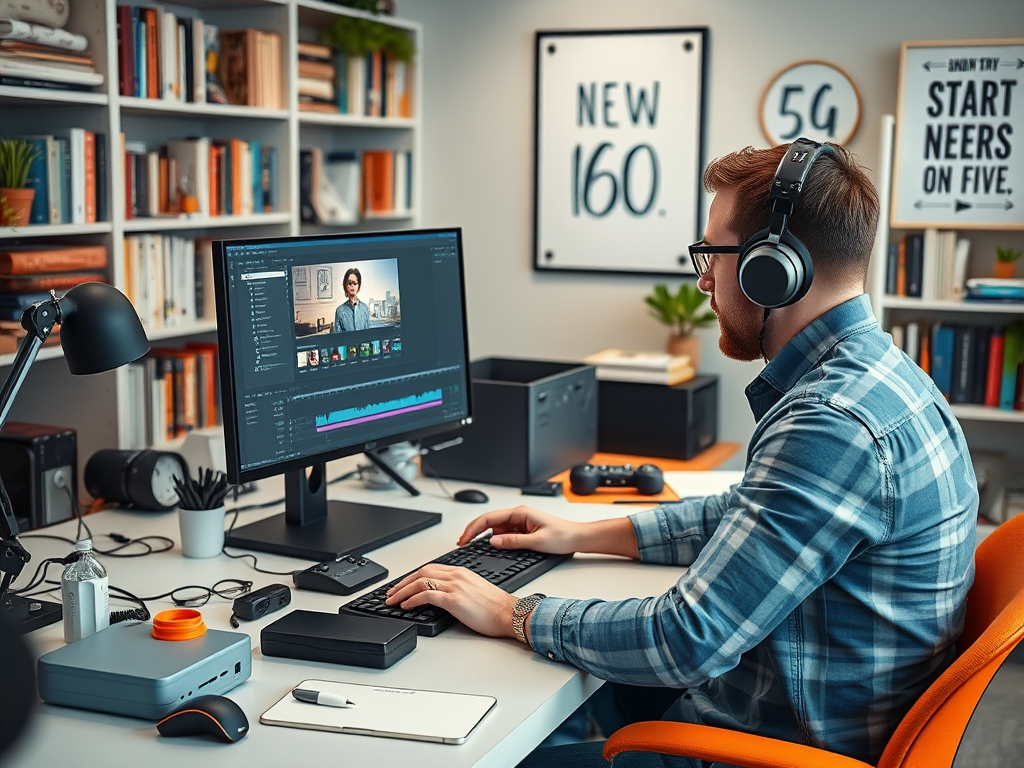In a digital landscape that’s continually shifting, staying ahead in search engine optimization is critical for businesses wanting to maintain a competitive edge. The growth of technology not only affects how users interact with information but also how search engines index and rank that information. By 2025, we can expect that these changes will push marketers back to the drawing board, rethinking their strategies while integrating newly emerging technologies. Savvy marketers must recognize that emerging trends such as artificial intelligence (AI), voice search, and video content are not just fads, but integral components of a successful SEO strategy. Understanding these trends is imperative for anyone looking to navigate the landscape effectively.
As we explore these latest developments in SEO, we’ll uncover actionable insights that will provide clarity on how to adapt your strategy for maximum effectiveness. This article will delve into the most pressing trends that warrant a reevaluation of your current SEO practices. By the end, you will be equipped with comprehensive knowledge to not only keep up with industry changes but to thrive in an ever-evolving environment.
The Rise of AI-Powered SEO Tools

Artificial intelligence is revolutionizing the SEO game in ways we could only previously imagine. By harnessing the power of machine learning, businesses can analyze vast volumes of data efficiently, enabling them to stay ahead of consumer trends. AI tools can provide insights into keyword performance, helping marketers adjust their content strategies based on real-time data. Furthermore, predictive analytics has emerged as a game changer, allowing brands to anticipate shifts in user behavior based on historical patterns. Not only does this save time, but it also helps in crafting more targeted marketing campaigns.
Utilizing AI in SEO isn’t just about efficiency; it’s also about enhancing creativity. Automated tools can generate content suggestions that align with trending topics, thus ensuring relevance and engagement with target audiences. Moreover, by using AI for campaign automation, brands can reduce errors that often occur through manual processes. However, it is essential to remember that while AI tools can aid in strategy development, the human touch remains irreplaceable. Marketers need to guide and fine-tune the output generated by these innovative tools.
- Increased efficiency in managing multiple campaigns simultaneously.
- Greater accuracy in keyword targeting and strategy execution.
- Enhanced reporting capabilities for tracking performance metrics.
- Ability to adjust marketing efforts based on real-time insights.
Voice Search Optimization

The popularity of voice search continues to rise, changing the way users query information online. Have you noticed how people interact with their devices differently when speaking compared to typing? This difference is significant and must be incorporated into your SEO strategies. With numerous consumers adopting smart speakers and voice-activated apps, optimizing for voice search is no longer optional but a vital strategy that marketers must prioritize. The statistics are staggering; recent studies show that over 50% of all searches will be voice-based by 2025. This shift requires a rethink of keywords, website content, and even content structure.
One effective way to optimize your content for voice queries is to focus on long-tail keywords that mimic natural speech patterns. Voice searches typically utilize conversational phrases rather than the concise keywords commonly typed into search bars. Analyzing phone queries can illuminate popular voice commands, allowing you to tailor your content accordingly. As voice search technology continues to evolve, so should your approach to SEO, ensuring you meet the needs of users preferring this mode of interaction.
- Integrate long-tail keywords that reflect everyday speech.
- Create FAQ sections to address common voice queries.
- Utilize local keywords for geographic-specific searches.
The Role of Video Content in SEO
Video content has exploded in popularity, making it a crucial element in SEO strategies. As users increasingly favor video over text, optimizing this form of content can significantly enhance visibility and engagement. Video platforms, particularly YouTube, now serve as search engines in their right, necessitating that brands understand how to optimize their video content effectively. According to studies, incorporating video in postings can lead to a 50% increase in organic search traffic. Combined with proper SEO tactics, this can dramatically improve a brand’s reach.
To get the most out of your video content, there are several best practices to adopt. Essential optimization includes choosing the right title, crafting engaging descriptions, and selecting relevant tags. Additionally, you should focus on creating high-quality visuals and sound to maintain viewer engagement. By doing so, you not only enhance the user experience but also improve retention rates, which signal to search engines that your content is valuable. Hence, video is a multifaceted tool in your SEO arsenal that, when used wisely, can yield significant returns.
| Video SEO Best Practices | Description |
|---|---|
| Optimized Titles | Craft titles that are crisp, clear, and incorporate primary keywords. |
| Engaging Descriptions | Write detailed descriptions that provide context and include relevant keywords. |
| Proper Tags | Use tags that reflect the video content and target audience interests. |
User Experience Signals and Core Web Vitals
User experience has taken center stage in search engine algorithms, impacting how websites rank on Google. Core Web Vitals—important metrics related to load speed, interactivity, and visual stability—have become critical components of SEO success. Google has indicated that these factors will heavily influence rankings, thus necessitating that brands prioritize user experience in their SEO strategies. Page loading time has a direct correlation with user retention; if visitors encounter delays, they are likely to abandon the site altogether. Therefore, understanding and implementing strategies to enhance these metrics is paramount.
Optimal page speed and mobile responsiveness should be a primary focus for any brand aiming for high search rankings. Techniques such as image compression, utilizing browser caching, and minimizing JavaScript can significantly decrease loading times. Additionally, ensuring a seamless mobile experience through responsive design will cater to the growing number of users accessing content from their smartphones. Brands that invest in user experience will not only benefit from improved SEO rankings but will also foster loyalty among their audience.
- Identify and eliminate render-blocking resources.
- Optimize images for faster loading.
- Implement responsive design principles for mobile users.
- Regularly monitor performance metrics through analytical tools.
E-A-T and Content Quality
In an increasingly crowded digital space, establishing expertise, authoritativeness, and trustworthiness (E-A-T) is essential for successful SEO. These factors are particularly relevant for websites that provide information related to health, finance, and other critical areas where misinformation can have significant consequences. By ensuring that content is produced and reviewed by qualified experts, brands can build a reputation that resonates with both users and search engines. Google favors high-E-A-T websites in their search rankings, thus highlighting the importance of content quality over the sheer volume of output.
Creating high-quality content involves thorough research and fact-checking, as well as employing credible sourcing. Marketers should also consider creating content that answers user questions and resolves pain points effectively. Additionally, providing updated information helps establish authority in your niche, fostering trust among your readers. With a focus on E-A-T, businesses can significantly improve their ranking potential, ensuring long-term success in SEO.
- Conduct thorough research to support all claims made in content.
- Utilize citations from credible sources to boost trustworthiness.
- Regularly update content to ensure accuracy and relevance.
Local SEO Trends for 2025
As more consumers turn to their smartphones for local searches, optimizing for local SEO has become a primary focus for businesses. Local SEO strategies are evolving, emphasizing the need for businesses to maintain optimized Google My Business listings. This is not just about the basics; brands must regularly update their listings with new information, respond to reviews, and engage in local community activities online. Understanding how these factors influence local search results will give businesses a significant edge in visibility within their geographic area.
Furthermore, identifying effective local keywords is essential for attracting the right audience. Utilizing tools for keyword research can help in uncovering terms that resonate with local consumers. Alongside this, customer reviews play a crucial role in local search rankings. Encouraging satisfied customers to leave positive reviews boosts credibility and can significantly impact local visibility. As local searches continue to rise, adopting a proactive local SEO strategy will be indispensable for brands striving for success.
- Incorporate geographic keywords into website content.
- Engage with customer reviews to enhance trust and reputation.
- Optimize local business listings with accurate information.
Conclusion
As we delve into a rapidly changing digital landscape, it is evident that key trends such as AI-powered tools, voice search optimization, and content quality will be paramount in shaping SEO strategies for 2025. By leveraging emerging technologies, businesses can create a more efficient and targeted approach to their SEO efforts. Optimizing for user experience signals, while emphasizing the importance of local SEO, will further enhance visibility and engagement. The marketing landscape is evolving, and those who adapt their strategies in alignment with these trends are more likely to thrive.
It’s not enough to simply stay informed; continuous adaptation and monitoring of your SEO practices are vital for long-term success. Insights gleaned from this article can build a foundation for your evolving SEO strategy. Embrace the challenge with a spirit of innovation and adaptability for your brand to flourish in 2025 and beyond.
Frequently Asked Questions
- What are the most important SEO trends to watch for in 2025? Staying updated with AI trends, voice search optimization, and evolving user experience metrics are key.
- How can I start optimizing for voice search? Focus on using conversational language and long-tail keywords in your content.
- Why is video content important for SEO? Video content engages users longer, which can improve SEO rankings and visibility.
- What are Core Web Vitals? Core Web Vitals are metrics that Google uses to measure user experience, including loading performance, interactivity, and visual stability.
- How can I improve my local SEO? Enhance your Google My Business profile, use local keywords, and encourage customer reviews.


